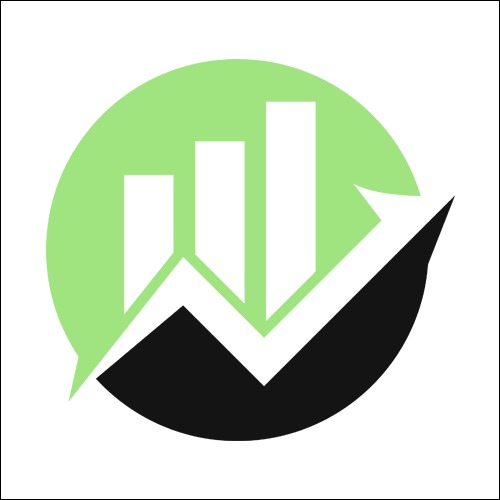Ethical sourcing isn’t just a “nice to have” anymore — it’s a business advantage hiding in plain sight. Today’s buyers are watching closely, and 88% say they prefer brands that hold their suppliers to high standards. That means your sourcing choices aren’t just a behind-the-scenes decision, they’re a front-and-center part of your reputation and revenue.
In this guide, we’ll cut through the buzzwords and show you exactly what ethical sourcing looks like in action, why it pays off, and how to create a supply chain that delivers on both profit and principle.
What Is Ethical Sourcing?
Ethical sourcing means obtaining products in a way that respects human rights, environmental sustainability, and legal standards. It goes beyond price and quality, requiring businesses to assess labor practices, environmental impact, and supplier transparency.
This ensures exploitative practices like forced labor or unsafe working conditions are avoided in favor of fairness and accountability.
No matter the size of the business, ethical sourcing strengthens supply chain control, builds customer trust, and supports regulatory compliance – especially in industries like food, fashion, and tech.
As global supply chains grow more complex, this approach helps companies create long-term value by aligning operations with broader social and environmental goals.
To apply ethical sourcing effectively, it helps to understand the core principles that guide responsible supply decisions:
- Fair Labor Practices – Ensuring all workers are paid fairly, treated with dignity, and operate in safe, legal working conditions. This includes prohibiting child labor, forced labor, and discriminatory practices.
- Environmental Responsibility – Selecting suppliers that minimize pollution, reduce waste, and protect natural resources through sustainable methods. Ethical sourcing requires a proactive approach to limiting environmental harm across production and transport.
- Transparency and Traceability – Businesses must know where their materials come from and how they’re made. This allows for better monitoring, easier audits, and more informed decisions throughout the supply chain.
- Community and Cultural Respect – Ethical sourcing supports local economies without exploiting them, ensuring suppliers respect indigenous rights, traditions, and land use. It encourages partnerships built on mutual benefit, not resource extraction.
- Compliance With Laws and Standards – Suppliers should meet international labor laws, safety regulations, and environmental protections. Ethical sourcing aligns with frameworks like ILO standards, the UN Global Compact, and national labor laws.
How to Build an Ethical Sourcing Strategy
Building an ethical sourcing strategy means creating a system that supports responsible decision-making across your supply chain. These steps will help you put strong values into practical, measurable actions that support long-term growth and trust.
Step 1: Audit Your Existing Supply Chain
Start by assessing where your materials, products, or ingredients are currently coming from. This includes reviewing supplier locations, working conditions, environmental practices, and contract terms. A supply chain audit identifies blind spots and gives you a baseline to measure improvement.
Use tools like supplier questionnaires, third-party assessments, or site visits where possible. Focus on high-risk areas first – such as offshore labor, raw material sourcing, or outsourced manufacturing. Auditing isn’t about perfection; it’s about awareness and control.
Pro Tip: Prioritize suppliers in countries or sectors with known labor or environmental risks to maximize early impact.
Step 2: Set Clear Ethical Sourcing Guidelines
After the audit, define your non-negotiables. These could include minimum labor standards, environmental policies, or transparency requirements. Written guidelines create consistency, so every purchasing decision aligns with your company’s values.
Make your expectations visible to all stakeholders – internal teams, procurement staff, and suppliers. Include references to international standards like the ILO Conventions, UN Global Compact, or specific certifications. This creates accountability and sets the tone for professional partnerships.
Pro Tip: Translate your guidelines into supplier-ready checklists to make compliance easier across borders.
Step 3: Vet and Select Responsible Suppliers
Sourcing ethically starts with sourcing selectively. Evaluate potential suppliers against your ethical criteria, not just cost and speed. Look for certifications, audit histories, and a willingness to share documentation.
A strong vetting process may include interviews, documentation reviews, and third-party audits. For higher-volume contracts, consider a trial period or limited engagement before scaling. Ethical partnerships grow from shared values, not just transactions.
Pro Tip: Avoid suppliers who refuse transparency – it’s a red flag you can’t afford to ignore.
Step 4: Leverage Technology and Certifications
Use available tools to simplify and standardize ethical sourcing. Platforms like Sedex, EcoVadis, or Source Intelligence help track compliance, flag risks, and verify supplier data. These systems also assist in creating audit trails for reporting and improvement.
Certifications like Fair Trade, Rainforest Alliance, or B Corp can also verify specific sourcing claims. While they don’t replace vetting, they strengthen trust and signal credibility to stakeholders. Make sure certification requirements align with your sourcing priorities.
Pro Tip: Choose tech tools that integrate with your procurement or ERP system for smoother tracking.
Step 5: Monitor, Improve, and Communicate Progress
Ethical sourcing isn’t static – it evolves. Set up regular review cycles to evaluate supplier performance, track KPIs, and revise sourcing practices as needed. This helps you adapt to legal changes, market expectations, or on-the-ground realities.
Transparency builds credibility. Share progress updates with customers, investors, and your team through reports or dashboards. Even if everything isn’t perfect, showing your effort builds trust and resilience.
Pro Tip: Track not just compliance, but improvements – suppliers who get better over time are often worth keeping.
Not sure how to draft sourcing guidelines or supplier audits? Let HelperX Bot help you write your ethical sourcing policy, checklists, or supplier outreach templates – instantly and intelligently.
Proven Practices to Strengthen Your Ethical Sourcing
Once your strategy is in place, success depends on how consistently and deliberately you operate it. These best practices help reinforce ethical sourcing every step of the way, even as your business scales or shifts.
Maintain Long-Term Supplier Relationships
Ethical sourcing works best when it’s built on trust, not constant churn. Long-term supplier partnerships allow you to collaborate on improvements and hold each other accountable over time.
These relationships often lead to better transparency, stronger quality control, and more shared responsibility. Switching suppliers frequently can undercut both values and operational consistency.
Require Supplier Self-Assessments Annually
Annual self-assessments help suppliers reflect on their own practices and give you updated visibility into their operations. Use structured forms that ask about labor conditions, safety practices, certifications, and environmental efforts.
This creates a documented feedback loop and shows you’re serious about accountability. Self-assessments also help identify improvements before formal audits take place.
Include Ethical Metrics in Vendor Scorecards
Don’t just measure cost, speed, and volume – factor in ethical performance. Include metrics like compliance rates, audit outcomes, and resource usage to give sourcing teams a fuller picture.
This ensures suppliers aren’t rewarded for cutting corners. Ethical scoring helps shift company culture toward value-based decision-making.
Train Procurement Teams on Ethical Standards
Internal alignment is key to making any ethical sourcing policy work. Procurement teams need training on what to look for, how to vet suppliers, and how to escalate red flags.
This prevents unintentional compromises when under pressure to cut costs or meet deadlines. Well-informed teams make stronger, values-driven sourcing decisions.
Communicate Sourcing Values to the Public
Transparency builds trust with your customers, stakeholders, and even regulators. Share your sourcing commitments and progress openly through reports, web pages, or product labels.
This turns your ethical sourcing into a brand asset, not just an internal process. Even when you’re still improving, honesty earns long-term credibility.
To amplify that transparency, MailerLite’s email marketing and automation platform makes it easy to share sourcing updates, stakeholder briefings, and progress reports – without the tech overhead..
How Ethical Sourcing Pays Off for Your Business
Ethical sourcing isn’t just the right thing to do – it makes financial sense. These economic benefits show how responsible sourcing directly supports growth, risk reduction, and long-term sustainability.
Increases Brand Trust and Customer Loyalty
Consumers today are more values-driven and pay attention to where products come from. When your sourcing aligns with ethical expectations, trust increases – and trust builds repeat business.
Studies show that 62% of consumers prefer to buy from brands that are transparent about sourcing and production ethics. Over time, this leads to stronger brand equity and lower churn rates.
Reduces Legal and Compliance Risk
Sourcing from verified, ethical suppliers reduce exposure to fines, recalls, or legal action. With regulations tightening globally – from forced labor laws to environmental reporting – non-compliance is increasingly costly.
Ethical sourcing helps you stay ahead of evolving requirements by building a traceable, audit-friendly supply chain. This proactive approach limits liability and improves investor confidence.
Strengthens Supplier Performance and Reliability
Ethical suppliers are often more stable, compliant, and invested in long-term partnerships. They tend to have safer workplaces, better-trained staff, and more consistent quality control.
These factors lead to fewer production delays, product defects, or communication breakdowns. Over time, this creates a supply chain that runs smoother and costs less to manage.
Supports Premium Pricing and Market Differentiation
Brands that commit to ethical sourcing often gain pricing power. Consumers are willing to pay more for products that align with their values, especially in fashion, food, and wellness markets.
Ethical positioning also creates differentiation in crowded marketplaces, making your product stand out for reasons beyond features or price. This added value strengthens margins without needing volume-based discounts.
Improves Investor and Stakeholder Confidence
Investors increasingly view ethical practices as indicators of long-term viability. ESG metrics (Environmental, Social, Governance) are now critical in many funding and acquisition decisions.
Businesses that demonstrate supply chain responsibility are seen as lower risk and better aligned with future regulatory trends. This opens access to capital, partnerships, and stakeholder goodwill.
Increases Supply Chain Resilience
Ethical sourcing encourages transparency, which helps companies spot weak links before they break. You’re less likely to be blindsided by human rights violations, environmental protests, or supplier shutdowns.
Resilient, well-vetted suppliers tend to recover faster during disruptions, reducing downtime and revenue loss. A transparent, ethical supply chain is also easier to adapt during global shifts.
How Ethical Sourcing Aligns with Supply Chain Risk Management Tools
Ethical sourcing directly supports modern supply chain risk management (SCRM) by increasing visibility, reducing exposure to unethical practices, and improving supplier accountability. With the help of SCRM software, companies can track ethical compliance, automate supplier audits, and flag risks before they escalate.
These tools are especially valuable for businesses managing multi-tier supply chains across regions with varying labor and environmental standards.
To understand where the biggest vulnerabilities occur, here are the most common supply chain risks that ethical sourcing helps mitigate:
1. Labor Violations: Suppliers using underpaid, exploited, or forced labor create legal and reputational risks. Ethical sourcing frameworks and audits help surface these violations early.
2. Environmental Non-Compliance: Poor waste management, pollution, or deforestation in the supply chain can lead to costly penalties and backlash. SCRM tools can track sustainability metrics to ensure supplier operations stay compliant.
3. Fraudulent Supplier Certifications: Some suppliers may fake ethical or sustainability credentials to win contracts. Verifying documents through third-party databases or SCRM platforms reduces this risk.
4. Geopolitical Disruptions: Regions with unstable governments or labor unrest pose sourcing challenges. Ethical sourcing encourages supplier diversification, which lowers reliance on high-risk zones.
5. Data Gaps in Tier 2 or Tier 3 Suppliers: Many companies lack visibility beyond their direct suppliers. SCRM software integrated with ethical sourcing processes can map deeper tiers and identify hidden threats.
Ethical Sourcing vs. Responsible Sourcing: What’s the Difference?
While often used interchangeably, ethical sourcing and responsible sourcing have different meanings, drivers, and applications in real-world supply chains. Ethical sourcing is typically focused on fair labor, human rights, and moral accountability.
Responsible sourcing casts a wider net, integrating environmental, legal, and governance concerns alongside ethical ones.
| Ethical Sourcing | Responsible Sourcing |
| Scope of Focus: Focuses on labor rights, fairness, and ethical treatment of workers | Scope of Focus: Encompasses labor, environment, legal compliance, and governance |
| Primary Drivers: Values-based decisions rooted in social responsibility | Primary Drivers: Risk mitigation, ESG compliance, and long-term sustainability |
| Common Industries: Fashion, retail, food, consumer goods | Common Industries: Manufacturing, technology, energy, global supply chains |
| Measurement Focus: Labor audits, wage standards, and fair trade verification | Measurement Focus: Carbon footprint, conflict minerals, biodiversity, and ESG metrics |
| Certifications: Fair Trade, SA8000, BSCI | Certifications: ISO 20400, GRI Standards, ESG rating frameworks |
| Tone and Positioning: Communicates moral integrity and builds consumer trust | Tone and Positioning: Communicates operational resilience and regulatory alignment |
Final Reflection: Making Ethics a Standard, Not a Statement
Ethical sourcing is no longer a trend, it’s a baseline expectation for businesses that want to stay credible, competitive, and legally sound. From consumer demand to regulatory pressure, the shift toward transparency and responsibility is shaping how products are sourced, priced, and trusted.
Companies that build ethical sourcing into their strategy aren’t just avoiding risk, they’re building long-term value.
With the right steps, tools, and mindset, ethical sourcing becomes a practical, scalable process, not just a marketing label. It’s about clear guidelines, smart partnerships, and steady progress, not perfection.
Need help drafting your first ethical sourcing audit checklist or policy draft? Launch HelperX Bot and get AI-crafted, editable documents in minutes – tailored to your industry, tone, and compliance needs.
Frequently Asked Questions
Small businesses can start with realistic steps like choosing local suppliers, requesting basic compliance documentation, or partnering with certified cooperatives. Ethical sourcing doesn’t require perfection, it requires progress, and small-scale improvements still build trust and reduce risk.
Yes, platforms like Sedex, EcoVadis, and Fair Trade databases help verify supplier claims and certifications. These tools provide visibility into labor practices, environmental policies, and audit histories, making it easier to assess credibility without needing complex in-house systems.
Industries like fashion, agriculture, electronics, and mining are most exposed due to complex global supply chains and labor-intensive production. These sectors often rely on subcontracting or raw material extraction, which increases the chance of hidden labor or environmental violations.
Source:
- https://plasticbank.com/blog/how-consumer-demand-is-fueling-the-sustainability-shift/

We empower people to succeed through information and essential services. Do you need help with something? Contact Us.
Want a heads-up once a week whenever a new article drops?







